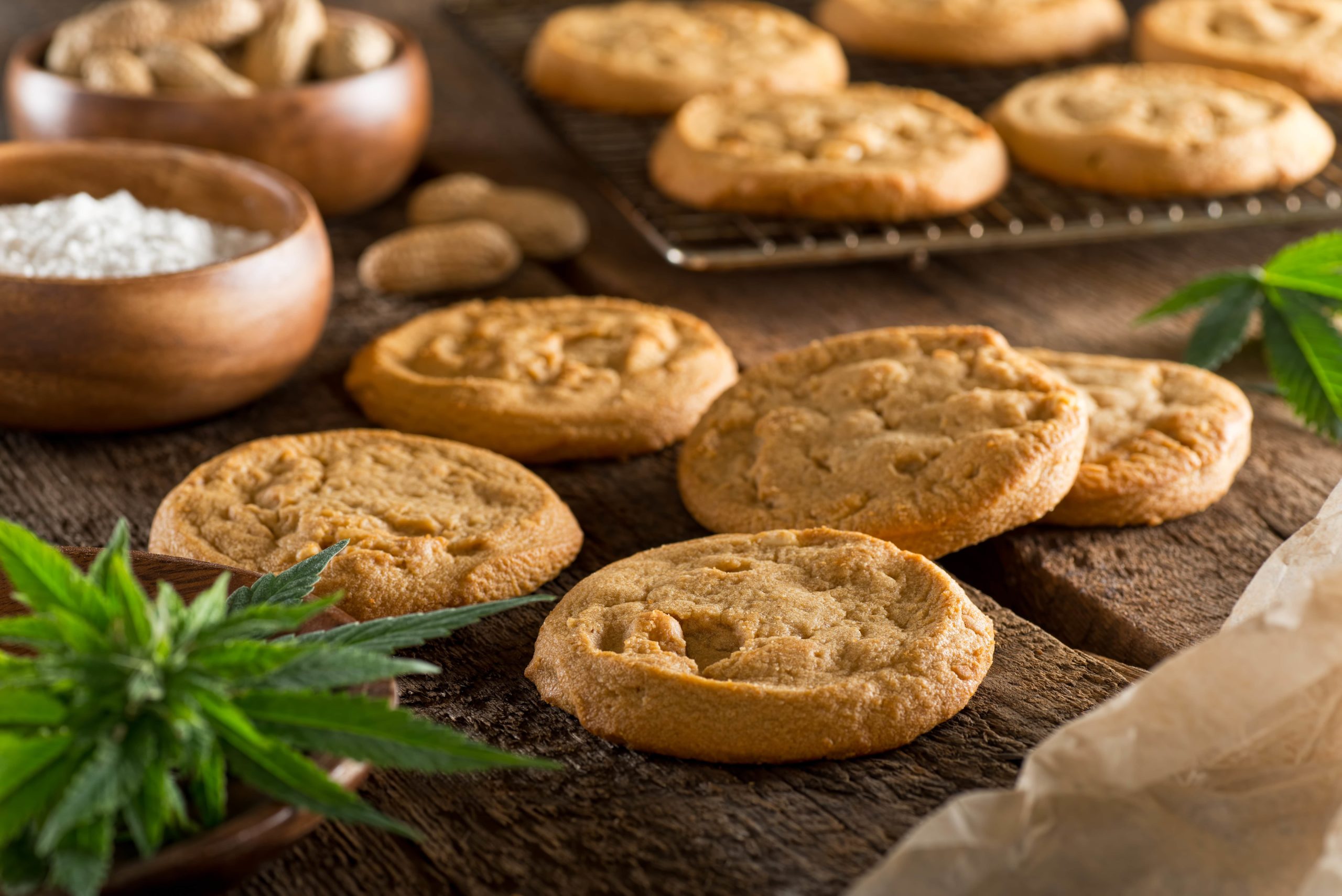
Creating edibles at home is an important ability for any marijuana enthusiast to master, and this guide will show you how to make potent cannabis butter step-by-step. In this guide, we’ll provide a comprehensive walkthrough of the process for making weed butter from decarboxylating cannabis flower to infusing regular unsalted butter with your decarbed material.
We’ll begin by discussing the importance of decarboxylating your cannabis flower, which is a crucial step in activating its psychoactive properties. Next, we’ll cover the various methods for melting and infusing regular unsalted butter with your decarbed cannabis material. Finally, we’ll demonstrate how to strain out plant matter from your infused mixture, leaving you with smooth and potent cannabutter ready for use in countless recipes.
By following our detailed instructions on how to make weed butter, even beginners can master this essential culinary technique and enjoy homemade edibles tailored to their preferences.
Table of Contents:
- Gather Ingredients
- Decarboxylate Cannabis
- Melt Butter
- Infuse Butter with Cannabis
- Strain Butter
- FAQs in Relation to How to Make Weed Butter
- Conclusion
Gather Ingredients
When it comes to making cannabis-infused butter, there are a few key ingredients that you’ll need. First and foremost, of course, is the cannabis itself. You’ll want to choose a strain that suits your needs; whether you prefer indica or sativa will depend on the desired effect. In addition to the weed itself, you’ll also need some butter – either salted or unsalted will work fine for this recipe. Once you have chosen your strain, consider adding complementary flavors with herbs or spices to suit your taste.
The cannabis should be decarboxylated before using it in this recipe – otherwise known as “activating” it – so that its full effects can be experienced when ingested. This process involves heating up the buds at low temperatures (typically between 245°F and 300°F) for around an hour before use in order to convert THCA into THC – which is what produces psychoactive effects when consumed orally rather than smoked/vaped like traditional marijuana products do. Decarboxylation is an important step for any edibles recipe.
For butter specifically, it is best if melted down slowly over low heat so that all of its fat molecules have time to absorb cannabinoids from the cannabis flower during the infusion process later on. This will ensure that they are evenly distributed throughout the finished product once cooled off again afterwards too. Salted varieties tend not only to taste better but also help bring out more flavor from whatever other ingredients might be added as well (like herbs/spices). Unsalted versions still work just fine though if preferred instead.
Gathering the necessary ingredients is a crucial first step to making weed butter. For an optimal outcome, it’s essential to decarboxylate the cannabis prior to combining it with other ingredients.
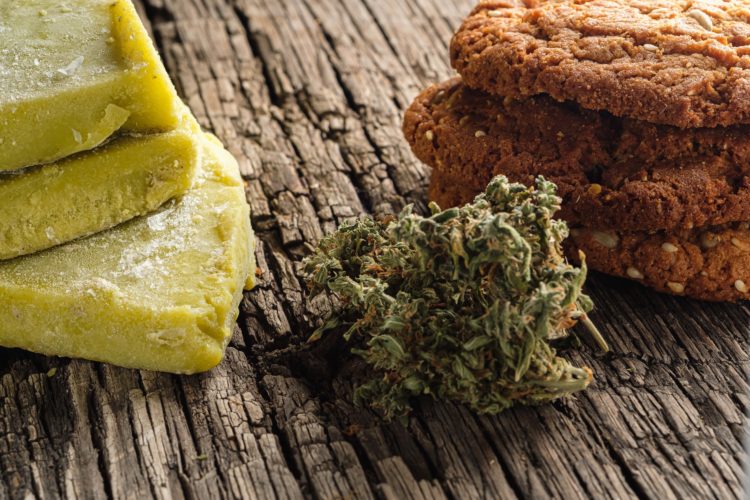
Decarboxylate Cannabis
Cannabis cultivators and users must comprehend decarboxylation in order to optimize their crop’s potency. This process helps activate the cannabinoids within the plant, making them more potent and available for consumption. Decarboxylating cannabis is an essential step when creating edibles or topicals with marijuana-infused butter.
The decarboxylation process begins by preheating your oven to 250°F (121°C). Place your cannabis buds on a baking sheet lined with parchment paper and spread out evenly so they’re not touching each other. Bake in the preheated oven for 30 minutes, stirring every 10 minutes until it emits a pleasant aroma and takes on a light brown hue. Once finished, let cool before handling as it will be hot.
When heated at low temperatures over time, carboxylic acids are released from THC-A molecules converting them into active THC molecules which provide users with psychoactive effects associated with smoking marijuana flowers or consuming edibles made from infused butter. The key here is low heat over long periods of time – too much heat can burn off all of those precious cannabinoids you worked hard to grow.
By decarbing weed correctly prior to infusing it into butter, you’ll ensure that your final product has maximum potency and effectiveness for whatever application you have in mind – whether that’s eating space cakes or rubbing topical salves onto sore muscles after a workout session. Just remember: Low heat over long periods of time equals optimal results.
Decarboxylating cannabis is an essential step in the process of making weed butter, as it activates the THC and other cannabinoids. Moving on to the next step, melting butter allows you to combine your decarboxylated cannabis with a fat source for better absorption into edibles.
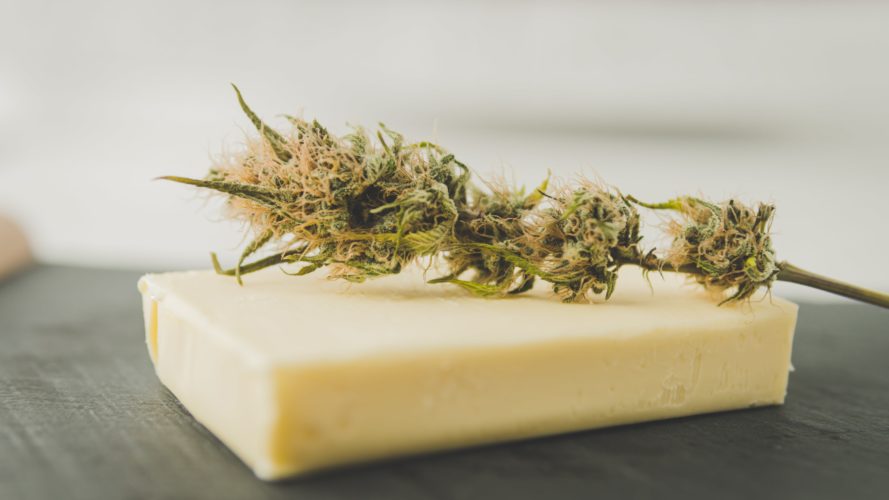
Melt Butter
Melt butter safely and effectively for use in making weed butter by using a double boiler. A double boiler is two pots that fit together, with one pot sitting inside the other. The bottom pot holds water while the top pot holds the butter. Set the two containers on a medium-high temperature until the liquid starts boiling, then reduce to a milder heat. Once melted, remove from heat and let cool slightly before adding cannabis decarboxylated material or concentrate into it.
To avoid burning your butter, stir occasionally as it melts and monitor closely so that you don’t overheat it or scorch it at any point during the melting process. If needed, add a tablespoon of cold water to help regulate temperature if necessary – this will also help prevent burning your butter too quickly. Once the thermometer reads between 160°F (71°C) and 200°F (93°C), immediately remove from heat source to prevent excessive heating or burning.
Monitoring the temperature is paramount when melting butter for use in making weed-infused edibles. When working with different types of fat, it is important to bear in mind that coconut oil has a higher melting point than dairy fats. Stirring occasionally and keeping an eye on your thermometer are key to preventing burning or scorching – if needed, add a tablespoon of cold water to help regulate the heat. Once you reach the range of 160°F (71°C) to 200°F (93°C), promptly remove from direct heat source.
When finished with the melting stage, strain out any plant matter through cheesecloth prior to adding decarboxylated cannabis material or concentrate into the cooled melted mixture. Stir thoroughly until all ingredients are evenly distributed throughout the liquid base before transferring it into desired containers for storage and future use.
To melt the butter, you can opt for either a double boiler or nuke it in short bursts. Subsequent to melting the butter, selecting high-grade cannabis is essential for achieving optimal results.
Infuse Butter with Cannabis
Infusing butter with cannabis is a relatively simple process that can be done in the comfort of your own home. Melt your butter in a pan over low heat to start the process. Once melted, add your ground up cannabis flower or trim and stir it into the melted butter for around 30 minutes. Ensure that the temperature remains below 350°F (177°C) to preserve the beneficial compounds while extracting them into the butter. This helps to preserve the terpenes and cannabinoids within the plant material while extracting them into the butter. If you find that there are any hot spots during stirring, reduce the heat further or remove from heat altogether until cooled down.
Once infused for at least 30 minutes, use cheesecloth or another fine mesh strainer to strain out all solids from liquid fats and oils so that only pure cannabutter remains behind in your saucepan. Afterward, pour into molds if desired before allowing to cool completely before refrigerating or freezing as needed depending on how quickly you plan on using it.
When infusing cannabis with butter, remember that low and slow is key. Lower temperatures help maintain flavor profiles without burning off important compounds like THC and CBD, while also helping prevent scorching which can lead to an unpleasant taste when consuming edibles made with cannabutter later on.
Infusing butter with cannabis is an important step in making weed butter. By straining the mixture, you can ensure that your final product will be of the highest quality and potency.
Strain Butter
Strain Butter is an essential step when making cannabis-infused butter. To strain the infused butter, you’ll need a cheesecloth and fine mesh strainer. Lay the cheesecloth atop the sieve and then pour your cannabis-infused butter through it. Gently squeeze out any remaining liquid from the butter, then discard any plant material that may have been strained through with it. The result should be a smooth, creamy consistency without any plant matter or chunks in it.
Once you’ve filtered your butter, it can be utilized to concoct edibles like brownies or cookies, or simply relished solo for its psychoactive effects. Once you’re done straining, store your cannabis-infused butter in the fridge for up to two weeks if not consumed right away.
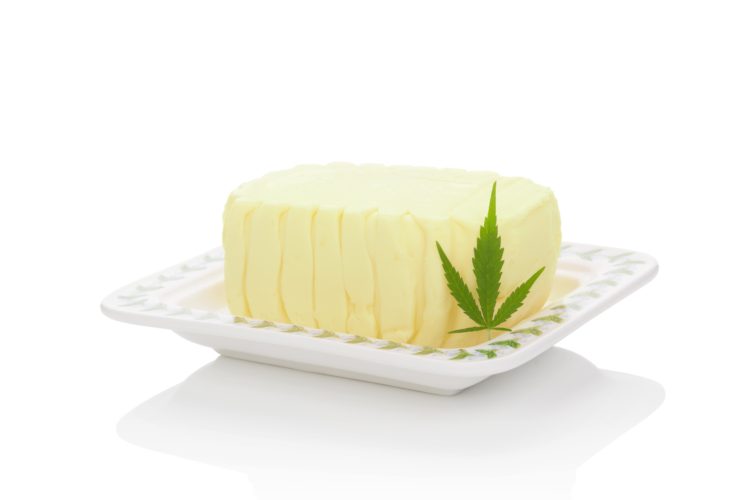
FAQs in Relation to How to Make Weed Butter
How much weed does it take to make good butter?
It depends on the strain of cannabis, as well as how potent you want your butter to be. In general, for every cup of butter you’ll need to use around 28g (1oz) dried cannabis or 56g (2oz) fresh buds. If you are looking for a stronger potency, then use more weed; however, this will also result in a greener and less flavorful end product. It is important to note that if using edibles made with marijuana-infused butter, start small and increase dosage gradually until desired effects are achieved.
How many hours does it take to make weed butter?
It typically takes between 1-2 hours to make weed butter. The process involves melting the butter and then adding cannabis, stirring the mixture until it is completely blended together. Once the mixture is completely blended, any residual plant matter can be strained out before stowing away your completed butter in an airtight receptacle for future use. The time taken to make the mixture may be slightly different each time, contingent on the quantity of butter and cannabis utilized, as well as other elements such as heat level and stirring velocity.
What kind of butter is best for making weed?
The best type of butter to use for making weed is clarified butter, also known as ghee. Ghee has a higher smoke point than regular butter and can better withstand the heat required when cooking with cannabis. It also contains fewer milk solids which makes it less likely to burn or scorch during the process. For those who are lactose-intolerant, ghee may be the more suitable choice for making weed edibles due to its lack of milk solids. Ghee is the best butter to use when making weed edibles as it will provide a richer, more consistent flavor.
How much butter does 10 grams of weed make?
10 grams of weed can yield approximately 3 tablespoons of cannabis butter. The amount produced could differ depending on the type of cannabis, its quality and other components such as liquid added while cooking. It’s important to note that 10 grams of weed does not necessarily equate to 3 tablespoons of butter; it is only an approximate measure based on averages from experienced growers and users.
Conclusion
Making weed butter is a great way to enjoy the benefits of cannabis in an edible form. Creating your own potent and flavorful cannabutter is as simple as decarboxylating cannabis flower, melting butter or oil, infusing with the desired marijuana strain, and straining out any plant material. All it takes is some quality ingredients, decarboxylation of the cannabis flower, melting down some butter or oil, infusing with the activated marijuana strain of choice and straining out any plant material before using. This easy-to-follow process allows for maximum potency and flavor when making weed butter that will make all your edibles taste even better.
Start growing your own weed today with GreenBudGuru.com‘s comprehensive guide on how to make weed butter and cultivate the perfect crop! Unlock the secrets of cannabis cultivation now and become an expert grower in no time.
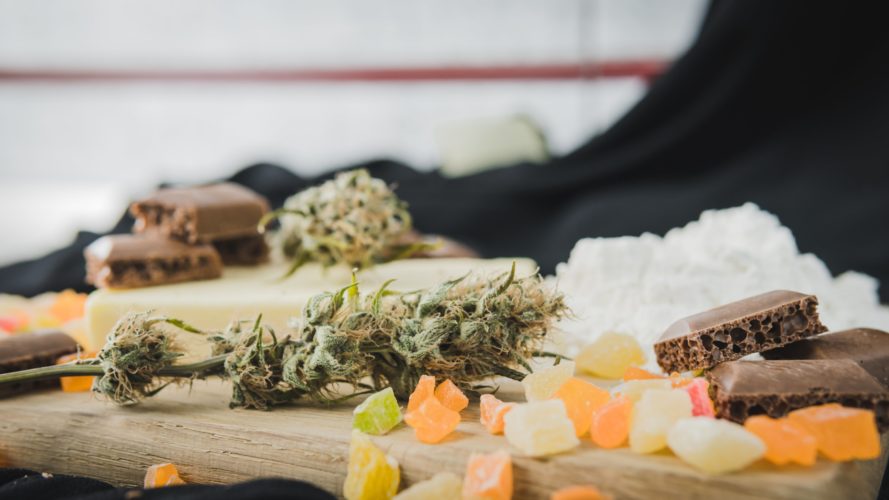
Originally posted 2023-04-01 16:04:48.


 James Alexander
James Alexander